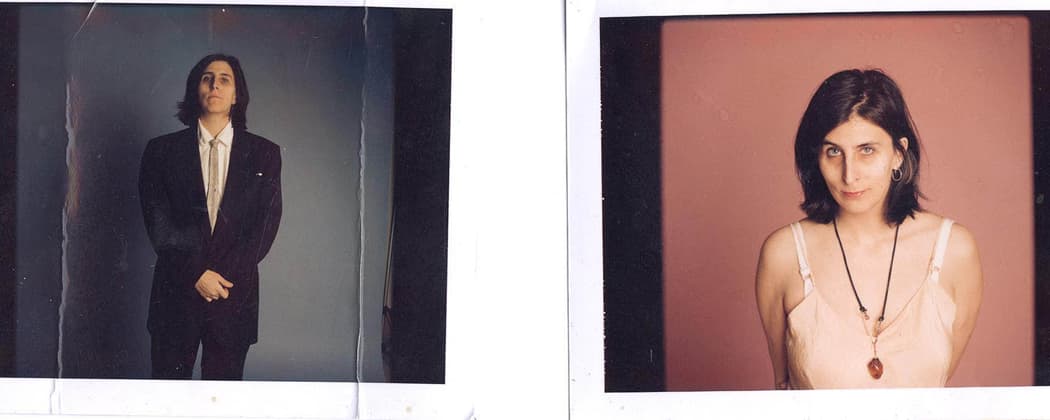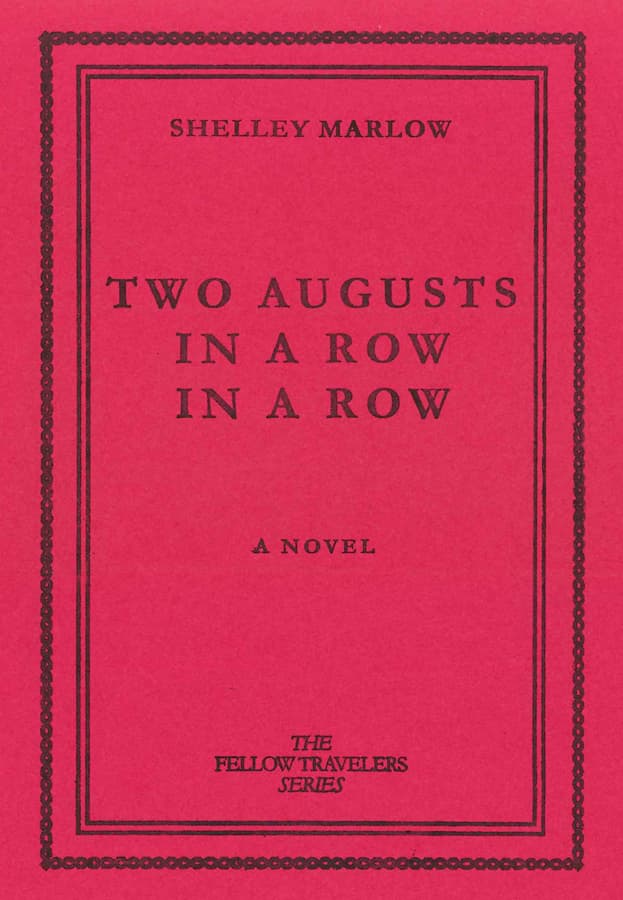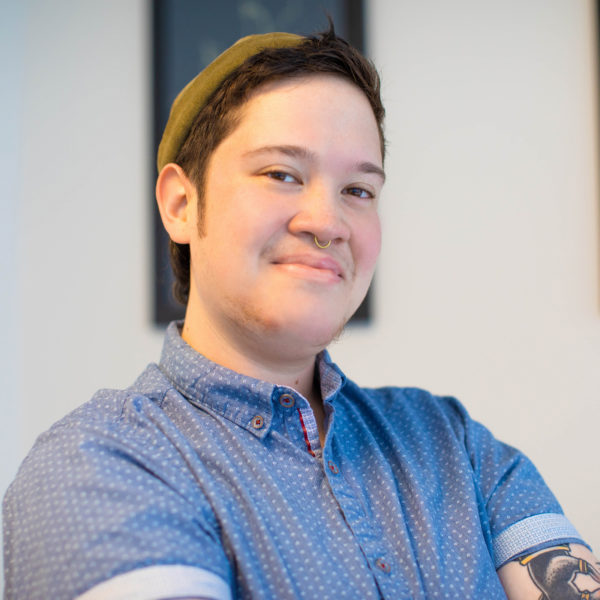Advertisement
Shelley Marlow's 'Two Augusts In A Row In A Row' Creates Queer Magic

To borrow an oft-used phrase from the members of my generation: I have a lot of feelings about “Two August in a Row in a Row.” Self-professed “visual artist; writer; editor; tarot and palm reader; rising star healer” Shelley Marlow’s newest novel is a cross-generational recognition of queer life.
As a genderqueer reader who has never before experienced this kind of raw validation in fiction, I daresay it’s groundbreaking.

The novel puts forth a sort of mystical symbolism before it’s even cracked. Wrapped in simple brown paper, stamped with just its title, “Two Augusts in a Row in a Row” offers itself up to the reader, naked and unadorned — simply beautiful. The very act of reading what’s inside requires a deliberate act of destruction.
I’m not sure if this was considered when the design for the cover was decided, but I hesitated for a moment before diving in. It gave me pause: How many people have I allowed to tear me open, to pry the darkest secrets from my depths, leaving me irreparably changed? Beneath its paper skin, the book is small and red — like a pocket bible, or a secret diary.
Set in New York City and sometimes Boston, the novel follows Philip, who used to be Philomena, and now creates an identity of their own. “I considered myself like a gay man dating men,” Phil says, “while they thought they were dating a masculine, dominant lesbian.” Philip yearns, like many of us do, for a lover they can be their fullest self around — for someone who listens instead of just hears, who feels invested beyond physical expressions in the bedroom. Philip revels in the freedom of androgyny, yet struggles with the kind of loneliness and dysphoria that so many genderqueer people face.
Philip finds momentary solace with a number of partners. At a wedding party, secluded together by a lake, a woman named Didi wraps Philip in a blanket and tells a story of a baby coyote captured by an elder from amongst a flock of sheep: “The elder said, ‘Come with me to the river so I can show you who you really are.’ The baby coyote looked into the water and saw that he was really a coyote, not a sheep.” The chemistry is palpable; Didi’s story is more poignant than she knows — or perhaps she does. Yet, when the chance comes, Philip loses their nerve.
Over and over again, Philip leaps for love until the temporary flush fades away, leaving nothing behind. After a drag show, a woman named Nettle offers, “How about you hang out with me for 17 years?” and Philip swoons — at least, until the next promise of forever comes along. The real object of Philip’s admiration is a woman named Magi, with whom a relationship has been cultivated only through online messages: In other words, the lacks of physical presence presents the perfect vessel for Philip to project their yearnings and expectations upon.
The narrative moves like a dream, with long, meandering descriptions of the mundane activities that fill up a day — creating a nest for a cat, or of a father’s quirky habits, or of a trip home on a subway train. Above all, this is a story of moments — the monotonous chores and sometimes, the glittering flashes of opportunity that make up a life — of how one-by-one they build up and morph into each other until they create the passage of time.
What makes this novel so compelling to me is the way it so gently portrays the queer experience. There is a magic to queerness that’s hard to explain, but exists in the way we recognize each other, speak only truths to each other, see each other, lay with each other. “Two Augusts in a Row in a Row” captures that sweetness of exploration, and the liberation that comes with letting passion take hold and direct our rediscovery of ourselves in coming out.
It’s both unapologetic and romantic in its soul-baring clarity. The novel is deeply sensual, frankly portraying the reality of physical and emotional love experienced by queer people, thus validating and celebrating lives that, for many, must be lived vibrantly, yet still in secret, to this day.
“Two Augusts in a Row in a Row” is at times sad and bittersweet, other instances jubilant. It feels familiar and quiet in its realness. Often, we tout novels that burst at the seams with action — we rejoice in the thrill of movement and resolution, of that one perfect scene that wraps the strings of plot up so nicely.
Where this novel triumphs is in its deliberate avoidance of perfection, which in turn creates its own sort of gracefulness. It focuses in on little moments and actions that reflect what real life is like. It’s casual magic. It’s truth.
Shelley Marlow will read from “Two Augusts in a Row in a Row” alongside fellow author Lori Horvitz on Thursday, July 23, at 7 p.m. at Harvard Book Store in Cambridge.
Spencer Icasiano's work has appeared in DigBoston, the Improper Bostonian and most recently The ARTery.
